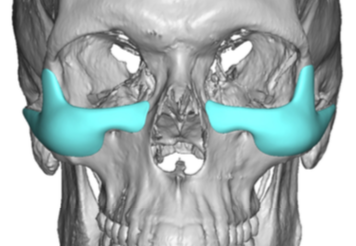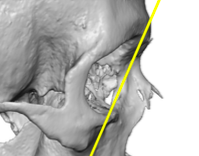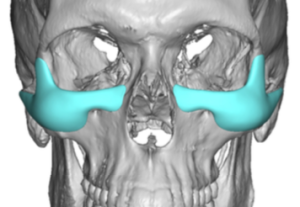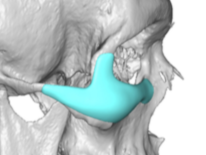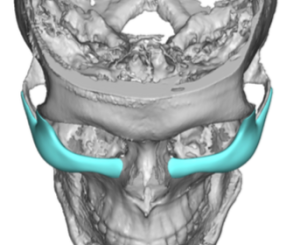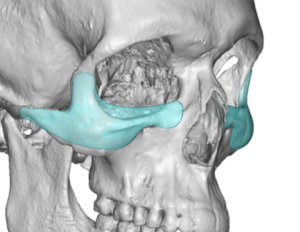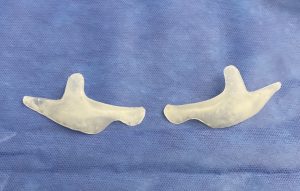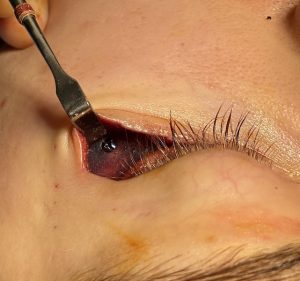Background: Aesthetic augmentation of the midface has historically been done using a set of available standard implant shapes. Cheek and tear trough implants have their roles but are best used on top of a more normal skeletal framework for modest aesthetic enhancements. In more significant midface retrusions there is a comprehensive skeletal deficiency that can be best perceived anatomically as a ZMC rotational deficiency.
The ZMC bony component of the midface is more formally known as the zygomatico-maxillary complex. This well known union of the cheek and orbital bones forms the classic tripod, or more anatomically correct, quadrapod (four-legged) midface bone complex. It is most recognized from traumatic facial injuries and facial fracture repair. Blows or falls to the cheek area result in fracture of the ZMC’s bony legs and an inward and downward rotation of the ZMC bony complex results. This creates an external deformity of a flattened cheek and loss of undereye support. It almost always causes a traumatic negative orbital vector due to the now rescessed infraorbital rim.
For patients with significant infraorbital-malar (IOM) deficiencies with lower lid sag, scleral show and a negative orbital vector, they are somewhat like a displaced ZMC fracture. As a result the definitive approach is to augment all of the involved bony surfaces.This includes the infra- and lateral rim as well as the zygomatic body and arch. The shape of such an IOM implant would look, by definition, like a tripod.

Using his 3D CT scan custom IOM implants were designed to augment the OZC bony deficiencies in a one piece implant design. The three legs of the implant included infraorbital, lateral orbital rims and zygomatic arch emanating out from a central upper zygomatic body implant design.
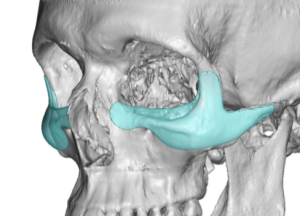
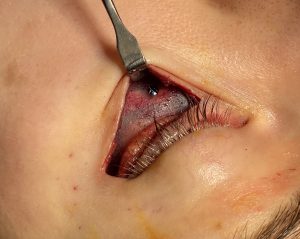
Custom IOM implants provide the best method available for aesthetic OZC bony deformities. When you really look at the typical collection of sagging lower eyelids, undereye hollows and flat cheeks this is a reflection of a larger underlying lack of bony support. It thus makes sense that augmenting the deficient bone by onlay augmentation is the foundational maneuver. Unlike spot implant augmentations, which provide a singular hump of material in a single area, a few millimeters of implant material spread over a large bony surface area is how a custom implant design creates its effect. This more completely treats the problem and provide a platform into which other soft tissue procedures, if needed, can be performed.
Case Highlights:
1) The custom infraorbital-malar implant is the definitive approach to a OZC midfacial skeletal deficiency that is associated with a negative orbital vector.
2) The ability to create vertical height along the infraorbital rim and add horizontal projection from the infraorbital rim and out along the entire length of the zygoma in a connected fashion is the dimensional capabilities of the custom IOM implant. When it has maximal coverage it is a tripod shaped implant design.
3) The lower eyelid approach is the preferred approach for IOM implant placement.The tripod design can pose challenges for insertion through the lower eyelid incision because of its three legged shape.
Dr. Barry Eppley
Indianapolis, Indiana

